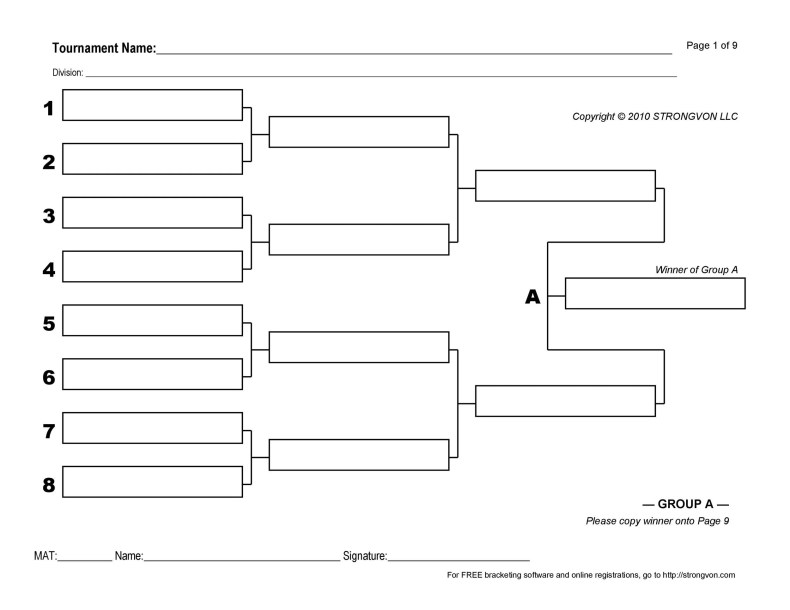Tournament Organizers are the unsung heroes behind every successful competition. From securing venues and managing budgets to crafting killer marketing campaigns and ensuring fair play, they juggle a million things to make sure the event runs smoothly. This deep dive explores the world of tournament organization, covering everything from planning and logistics to post-event analysis and risk management.
Get ready to learn what it really takes to pull off an amazing tournament!
We’ll break down the various roles within an organizing team, offering insights into the responsibilities of each position. We’ll cover the nitty-gritty details of tournament planning, from securing permits to creating a detailed schedule. Plus, we’ll explore effective marketing strategies to attract participants and spectators, and discuss how to create a fair and fun environment for everyone involved.
Whether you’re planning a small-scale chess tournament or a massive esports competition, this guide has you covered.
Tournament Organizer Roles and Responsibilities
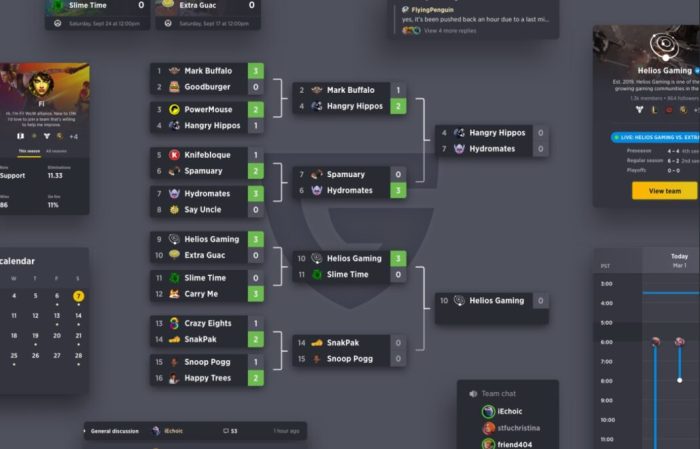
Pulling off a successful tournament takes more than just a love of the game; it requires a well-oiled team with diverse skills and responsibilities. From securing sponsors to managing volunteers, each role plays a crucial part in ensuring a smooth and memorable event for all participants.
Tournament Director Responsibilities
The Tournament Director is the ultimate decision-maker and the face of the tournament. They oversee all aspects of the event, from conception to completion. This includes setting the overall vision, establishing the budget, and ensuring the tournament runs according to plan. They are responsible for making critical decisions, resolving conflicts, and representing the tournament to sponsors, participants, and the public.
They often work closely with the other team leads to ensure that everything runs smoothly and according to schedule. Think of them as the CEO of the tournament operation. A successful director needs strong leadership, communication, and problem-solving skills.
Volunteer Coordinator Responsibilities
The Volunteer Coordinator is responsible for recruiting, training, and managing the tournament’s volunteers. This involves creating volunteer descriptions, conducting interviews, organizing training sessions, and assigning tasks during the event. Effective communication and organization are key to this role. They are the glue that holds the many moving parts of volunteer support together, ensuring volunteers are properly briefed, adequately supported, and feel valued for their contributions.
They must be able to handle a large number of people and adapt quickly to unexpected situations. A good volunteer coordinator can make or break the overall volunteer experience and, by extension, the event itself.
Marketing and Sponsorship Manager Responsibilities
This crucial role focuses on generating excitement and securing financial backing for the tournament. They develop and implement marketing strategies across various channels, including social media, email marketing, and print advertising. They also identify and approach potential sponsors, negotiate sponsorship packages, and manage sponsor relationships. They’re responsible for creating compelling marketing materials and tracking the effectiveness of campaigns.
A successful marketing and sponsorship manager needs creativity, strong communication skills, and a solid understanding of marketing principles. They often work closely with the tournament director to ensure the marketing efforts align with the overall tournament goals and brand.
Logistics Manager Responsibilities
The Logistics Manager handles the nitty-gritty details of the event, ensuring everything runs smoothly on the day of the tournament. This includes securing the venue, arranging transportation, managing equipment rentals, and coordinating catering. They need exceptional organizational skills and attention to detail. Their role is often overlooked, but it is vital for a successful event. A well-executed logistics plan ensures a comfortable and efficient experience for both participants and spectators.
This role also often involves managing any potential issues that may arise during the event, requiring problem-solving skills and the ability to think on their feet.
Budget Manager Responsibilities
The Budget Manager is responsible for creating and managing the tournament’s budget. This involves forecasting expenses, tracking income, and ensuring the tournament remains within budget. They work closely with the Tournament Director and other team leads to allocate funds appropriately. They also need to be able to accurately predict potential cost overruns and implement strategies to mitigate them.
A strong understanding of financial management is crucial for this role. They provide regular budget updates to the director and team, keeping everyone informed of the financial health of the tournament.
Tournament Organizational Chart
Imagine a pyramid structure. At the very top is the Tournament Director, reporting directly to the overall governing body or sponsoring organization (if applicable). Below the Director are four main branches: Marketing & Sponsorship, Logistics, Volunteer Coordination, and Budget Management. Each branch head reports directly to the Tournament Director. Within each branch, there may be additional team members reporting to the branch head, depending on the size and complexity of the tournament.
For example, the Marketing & Sponsorship branch might include a social media manager and a graphic designer. The Logistics branch could include a transportation coordinator and an equipment manager. This hierarchical structure ensures clear lines of communication and accountability.
Marketing and Promotion of Tournaments
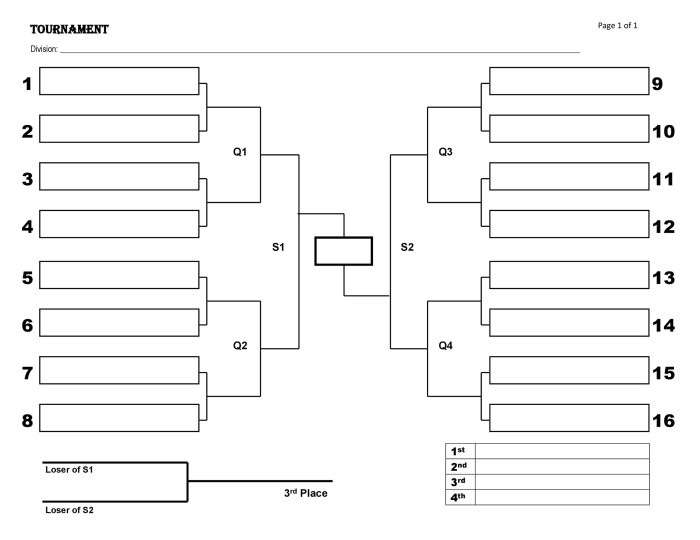
Throwing a killer tournament isn’t just about the gameplay; it’s about getting the word out and building hype. A strong marketing strategy is crucial for attracting both players and spectators, ensuring a successful and well-attended event. This involves crafting compelling promotional materials, utilizing diverse marketing channels, and engaging your target audience effectively.Effective tournament marketing requires a multi-faceted approach.
You need to understand your target audience – are you aiming for casual gamers, hardcore competitors, or a mix? Once you’ve identified your audience, you can tailor your messaging and choose the most effective marketing channels to reach them. Consider factors like budget, timeline, and the tournament’s overall brand and image.
Promotional Materials Examples, Tournament Organizers
Creating engaging promotional materials is key to attracting participants. Think of your flyer as a mini-advertisement, highlighting the key selling points of your tournament. A well-designed flyer should include the tournament name, date, location, game, prize pool (if any), registration details, and compelling visuals. For example, a flyer for a fighting game tournament might feature dynamic artwork of popular characters, while a flyer for an esports tournament might showcase the winning team from a previous year.
Social media posts should be visually appealing, concise, and include relevant hashtags. Website content should provide detailed information about the tournament, including rules, schedules, and FAQs. Consider incorporating high-quality images or videos to enhance the visual appeal and engagement of all materials. For instance, a short video highlighting past tournament highlights or interviews with players can generate excitement and anticipation.
Marketing Channels and Their Effectiveness
Different marketing channels cater to different audiences and have varying levels of effectiveness. Social media platforms like Twitter, Instagram, Facebook, and Discord are highly effective for reaching younger demographics and building community. Email marketing remains a powerful tool for direct communication with potential participants, especially when announcing registration openings or important updates. Partnering with gaming websites, streamers, or esports organizations can significantly expand your reach and credibility.
For example, sponsoring a popular Twitch streamer’s broadcast can expose your tournament to their large and engaged audience. Local partnerships with game stores or community centers can help you tap into local audiences and build community support. Each channel requires a unique approach; what works on Twitter might not work on Facebook.
Social Media Campaign Example: “Clash of Champions”
Let’s imagine a hypothetical fighting game tournament called “Clash of Champions.” Our target audience is primarily young adults aged 18-35, active on social media.
- Pre-Tournament Phase (2 weeks before): We’ll use eye-catching visuals of the game’s characters and post teasers about the prize pool and special guests. Sample post: “Get ready to rumble! 🥊🔥 The Clash of Champions fighting game tournament is coming soon! Prize pool: $1000! Sign up now: [link]. #ClashOfChampions #FightingGames #Esports” We’ll run contests and giveaways to increase engagement and generate buzz.
- Mid-Tournament Phase (1 week before): We’ll post player spotlights, showcasing the participating fighters and their accomplishments. Sample post: “Meet [Player Name], a rising star in the fighting game scene, competing in the Clash of Champions! Follow his journey: [link]. #ClashOfChampions #PlayerSpotlight #FightingGames” We’ll use interactive polls and Q&A sessions to encourage audience participation.
- Post-Tournament Phase (during and after): We’ll post live updates during the tournament, including match highlights and scores. Sample post: “[Player A] takes the lead against [Player B] in a nail-biting match! Watch the action live: [link]. #ClashOfChampions #LiveStream #FightingGames” After the tournament, we’ll announce the winner and share photos and videos of the event. We’ll also collect feedback to improve future tournaments.
Tournament Rules and Regulations: Tournament Organizers
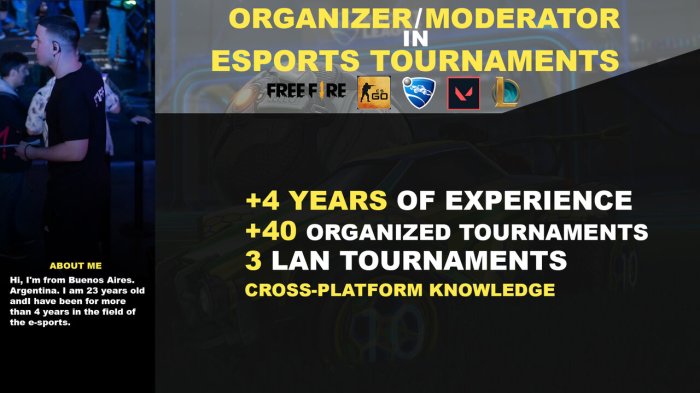
Crafting a solid set of rules and regulations is crucial for any tournament, big or small. It’s the backbone of fair play, ensuring everyone understands the expectations and preventing those inevitable post-game arguments. Clear, concise rules foster a positive competitive environment where players can focus on their performance rather than questioning the rules themselves.
Importance of Clear and Concise Rules
Ambiguous rules are a recipe for disaster. They create confusion, leading to disputes and potentially undermining the integrity of the entire competition. Clear rules, on the other hand, leave no room for misinterpretation. Every participant should understand the guidelines before the tournament begins, allowing for a smooth and equitable competition. This minimizes delays, keeps the tournament running smoothly, and ultimately enhances the overall player experience.
A well-defined rulebook also provides a framework for consistent enforcement, promoting fairness and trust among participants.
Sample Rules and Regulations: A Collegiate Esports Tournament (Rocket League)
This example focuses on a hypothetical collegiate Rocket League tournament. Adaptations for other games or sports are straightforward.
Rule Violations and Dispute Resolution
The tournament will have a designated panel of referees or judges. Their decisions are final regarding rule interpretations and dispute resolution. Appeals may be submitted in writing to the tournament director, but the referee’s decision stands until reviewed and potentially overturned. The appeals process is designed to ensure fairness and consistency in ruling application. All decisions will be documented for transparency.
- Violation Reporting: Players or spectators can report rule violations to the nearest referee. Reports should include the time, location, and nature of the violation, along with any supporting evidence (e.g., replay footage).
- Evidence Review: Referees will review all reported violations, considering all available evidence. If necessary, slow-motion replays will be used for clarity.
- Penalty Imposition: Penalties will be applied based on the severity of the violation, ranging from warnings to disqualification. Consistent application of penalties is key to maintaining fairness.
Examples of Rule Infractions and Penalties
| Infraction | Penalty |
|---|---|
| Boosting abuse (excessive use of boost outside of gameplay) | Warning (first offense), Point deduction (second offense), Disqualification (third offense) |
| Team collusion (pre-arranged outcomes or intentional forfeits) | Disqualification of all involved teams |
| Unsportsmanlike conduct (verbal abuse, harassment, etc.) | Warning (first offense), Point deduction (second offense), Disqualification (third offense) |
| Use of unauthorized software or modifications | Immediate disqualification |
Post-Tournament Evaluation and Analysis
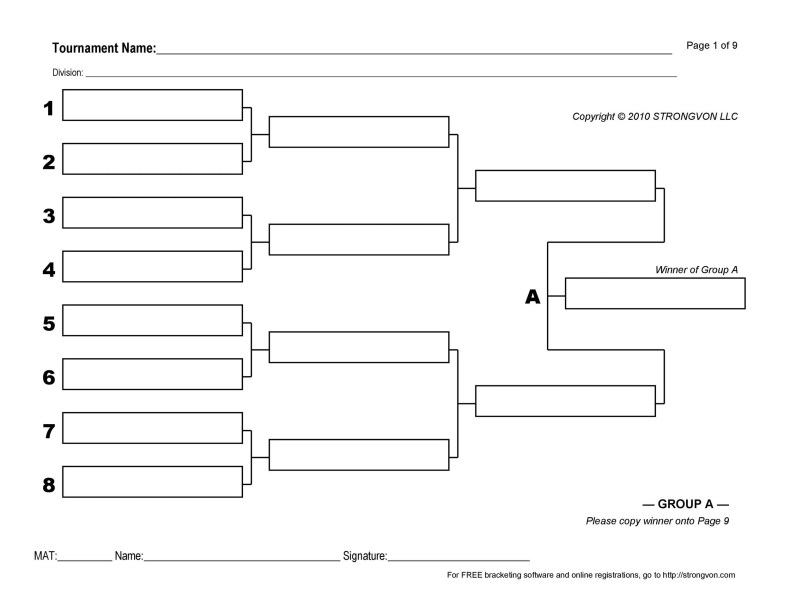
So, your tournament’s wrapped up. High fives all around, right? But before you kick back and relax, it’s time to get analytical. A thorough post-tournament evaluation isn’t just about patting yourselves on the back (though that’s deserved!). It’s about identifying what worked, what didn’t, and how to make your next event even bigger and better.
This process helps you refine your strategy, boost participant satisfaction, and ultimately, create a more successful tournament experience for everyone.Post-tournament analysis involves gathering data, identifying key areas for improvement, and creating an action plan to address those areas. This iterative process ensures that each tournament builds upon the success of the previous one, leading to continuous growth and improvement.
Gathering Feedback from Participants and Spectators
Effective feedback mechanisms are crucial for understanding the tournament’s strengths and weaknesses from the perspectives of both participants and spectators. This information provides invaluable insights into what aspects of the event resonated positively and which areas need improvement. We can achieve this through various methods. For example, distributing short online surveys immediately following the tournament allows for capturing immediate impressions while the event is still fresh in participants’ minds.
These surveys should include a mix of quantitative questions (e.g., rating scales for various aspects of the tournament) and qualitative questions (e.g., open-ended questions about their overall experience and suggestions for improvement). Additionally, collecting feedback through social media monitoring, analyzing comments and reviews on platforms where the tournament was promoted, offers another valuable source of information. Finally, conducting informal interviews with key participants and volunteers can provide rich qualitative data that complements survey results.
Key Performance Indicators (KPIs) for Tournament Success
Assessing the success of a tournament requires identifying and tracking specific Key Performance Indicators (KPIs). These metrics provide objective measures of performance across different aspects of the event. Some crucial KPIs include participant satisfaction (measured through survey responses), tournament attendance (number of participants and spectators), social media engagement (likes, shares, comments), sponsorship revenue (if applicable), and overall tournament costs.
Analyzing these KPIs allows organizers to pinpoint areas of success and areas needing improvement. For example, a high participant satisfaction score coupled with strong social media engagement suggests a positive overall experience, while low attendance may indicate a need for improved marketing strategies.
Analyzing Tournament Data to Improve Future Events
Once the data is gathered, the next step is analyzing it to identify trends and patterns. This analysis should focus on both quantitative and qualitative data. Quantitative data (like attendance numbers and survey scores) can be analyzed using statistical tools to identify significant trends. Qualitative data (like open-ended survey responses and social media comments) can be analyzed using thematic analysis to identify recurring themes and sentiments.
For example, if many participants mention issues with the tournament’s scheduling, it suggests a need for adjustments in future scheduling plans. Analyzing this data in a systematic manner provides a clear understanding of what aspects of the tournament were successful and which areas require improvement.
Developing an Action Plan Based on Post-Tournament Evaluation Findings
The final step is translating the insights gained from data analysis into a concrete action plan for future events. This plan should Artikel specific, measurable, achievable, relevant, and time-bound (SMART) goals. For instance, if the analysis reveals low attendance, the action plan might include strategies like enhancing marketing efforts, offering early-bird discounts, or partnering with local organizations to promote the event.
Similarly, if feedback highlights issues with the tournament’s venue, the plan could involve researching and securing a more suitable venue for future tournaments. The action plan should be documented and shared with the entire tournament organizing team to ensure everyone is aligned on the goals and strategies for improvement.
FAQ Resource
What’s the biggest challenge Tournament Organizers face?
Balancing competing priorities – budget constraints, participant expectations, and unforeseen issues – is often the biggest hurdle.
How do I find volunteers for my tournament?
Reach out to local schools, clubs, and community groups. Offer incentives like free entry or event t-shirts.
What software can help with tournament management?
Many platforms offer registration, scheduling, and bracket management tools. Research options based on your tournament’s size and type.
How do I handle a dispute during a tournament?
Have clear rules and a designated dispute resolution process in place. Fairness and consistency are key.
What are some creative fundraising ideas?
Consider sponsorships, crowdfunding, merchandise sales, and raffles to boost your budget.
